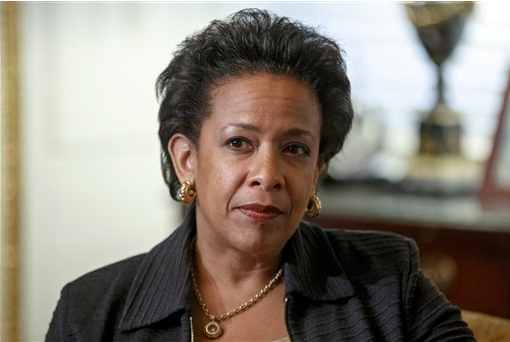Federal investigation set for Eric Garner case

Loretta Lynch. AP Photo/J. Scott Applewhite
The Justice Department will conduct a federal investigation into the chokehold death of an unarmed black man after a grand jury in New York City declined to indict the white police officer who applied the move, Attorney General Eric Holder said Wednesday.
Brooklyn federal prosecutor Loretta Lynch, President Barack Obama’s nominee to replace Holder who announced in September that he will step down from office, promised that the investigation “will be fair and thorough, and it will be conducted as expeditiously as possible.”
Lynch’s district presides over the Eastern District of New York, which encompasses Staten Island and will be conducting the investigation.
